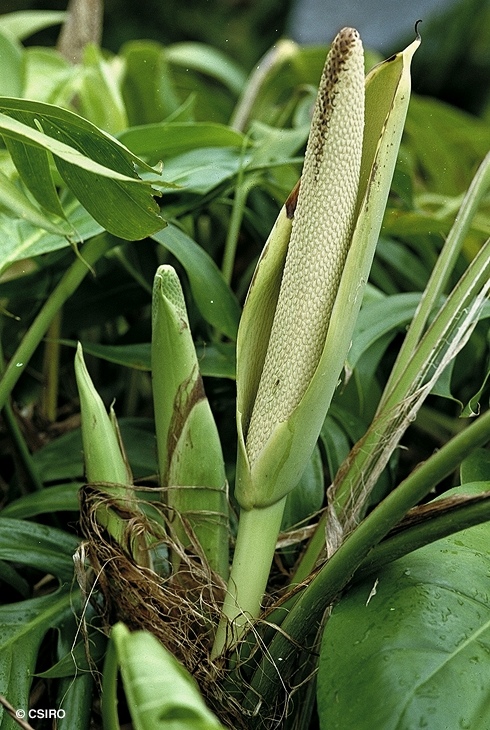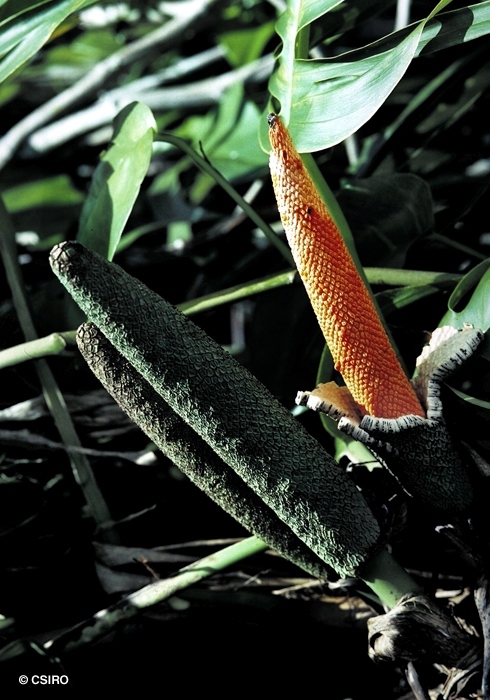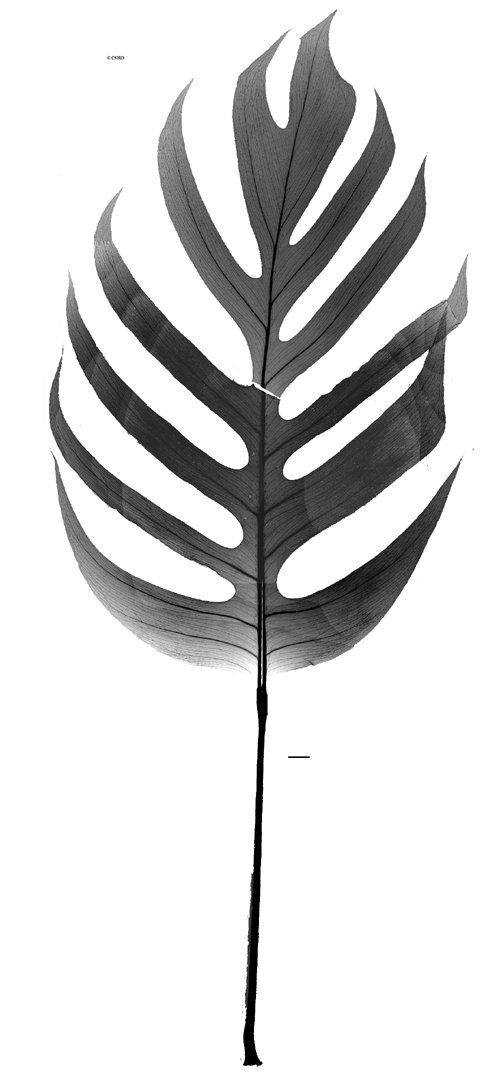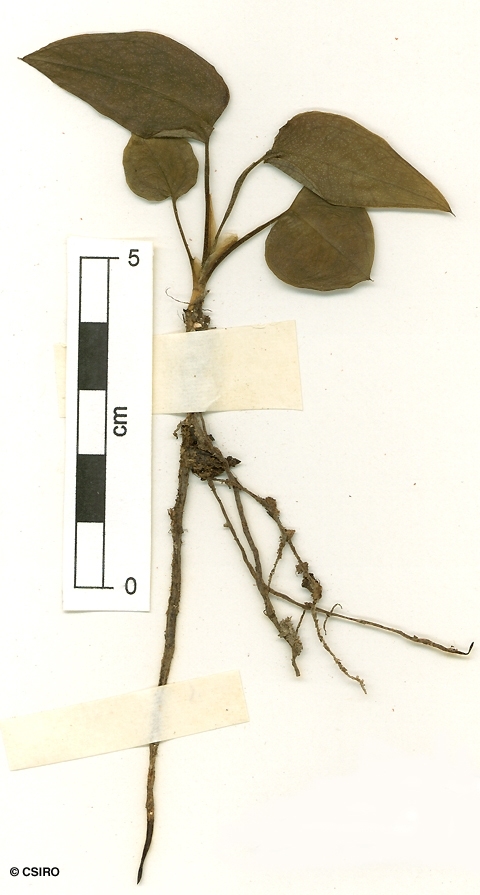Australian Tropical Rainforest Plants - Online edition
Epipremnum pinnatum (L.) Engl.







Engler, H.G.A. (1908) Das Pflanzenreich Heft 37 : 60.
Monstera, Native; Native Monstera
Vine stem diameters to 4 cm recorded. Stems marked by large leaf base scars.
Leaf blades deeply pinnately lobed, leaf blades about 40-50 x 21-25 cm overall, petioles about 25-30 cm long, grooved or channelled on the upper surface. Elongated glands or nectaries visible on the underside of the leaf blade and resemble oil dots when viewed from above. Petiole sheathing the stem when young but disintegrating into fibres when older.
Infructescence about 27 cm long, outer surface green, segmented, when shed reveals a fleshy mass of individual orange fruits. Seeds about 4 mm diam., immersed in orange flesh. Testa cream. Embryo curved, about 3 mm long.
First leaf blade cordate, petiole about as long as the blade or longer. Petiole +/- winged, the wings very membranous and papery. Petiole sheathing the stem. At the tenth leaf stage: leaf blade cordate to ovate, apex apiculate, base cordate. Leaf blades and stem marked with short white or pale stripes or cigar-shaped tissue inclusions. Adventitious roots produced on the stems opposite some leaves. Seed germination time 22 days.
Occurs in CYP, NEQ and CEQ. Altitudinal range from near sea level to 350 m. Grows in well developed lowland rain forest and gallery forest. Also occurs in Malesia and the Pacific islands.
Epipremnum pinnatum is a root-climbing aroid distributed across southeast Asia and the western Pacific. The wild type is also sometimes cultivated, and is used as a traditional medicine in the treatment of rheumatism and fractures and dysentery. In Singapore, E.pinnatum is referred to by the Chinese inhabitants as Long Wei Cao, literally Dragon Tail Plant. The leaves of the plant are regularly sold in markets for use as a herbal tea which is reputedly effective against rheumatism, and which acts as a general tonic. Recently, the plant has established a local reputation as an effective anticancer agent. A recent study has revealed that extracts from the leaves exhibit cytotoxicity toward cancer cells in vitro, and the hot-water-soluble fraction of the extract produces immuno-stimulation in laboratory animals. 9805-3140 Chen, L.M.J.; Turner, I.M. (School of Biological Sciences, National University of Singapore, Singapore 119 260) The use of Epipremnum pinnatum (Araceae) in Singapore in the treatment of cancer: An unreported application of a herbal medicine. Economic Botany v.52(1): p.108-109, 1998 (Eng; 6 ref).
One of the most interesting migraine remedies began on the island of Lomaloma, in the South Pacific. A Hungarian traveler married a native woman and settled on the island. He suffered constantly from migraines, and his wife insisted that the islanders had remedies, which would cure him. During a period of two years, Mr. Vessey took 55 different native remedies, but only four of them gave him temporary relief. He suspected that the natives were trying to poison him, so he had them take everything first, and he took careful notes on all the plants. At long last, four cups of a tea made from a mixture of Premna taitensis and Epipremnum pinnatum = E. vitiensis permanently cured his migraines. Natural Earth: The English Standard Reference on Herbal Healing Volume 1: The Herbal Center of Healing Migraine Headaches by Gary Lockhart Reprinted from The Herbal Center of Healing.





